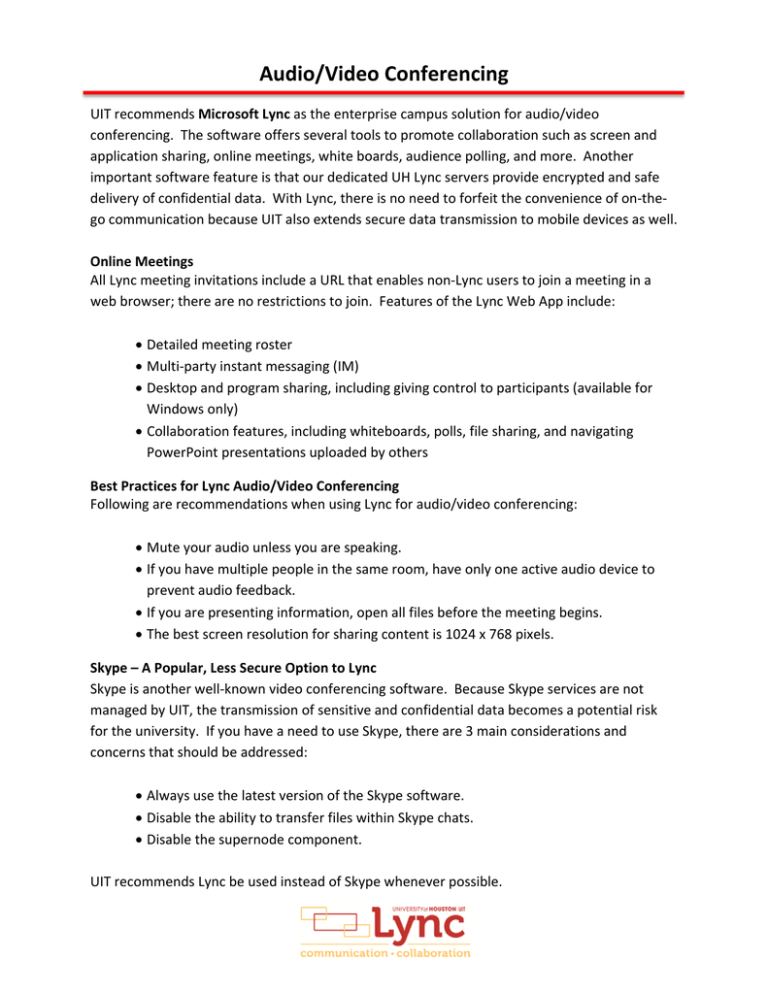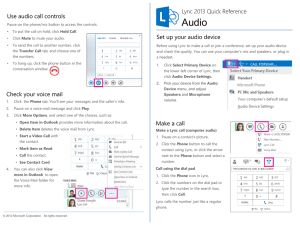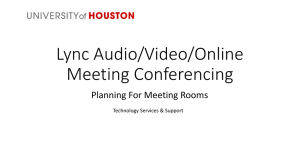Audio/Video Conferencing
advertisement

Audio/Video Conferencing UIT recommends Microsoft Lync as the enterprise campus solution for audio/video conferencing. The software offers several tools to promote collaboration such as screen and application sharing, online meetings, white boards, audience polling, and more. Another important software feature is that our dedicated UH Lync servers provide encrypted and safe delivery of confidential data. With Lync, there is no need to forfeit the convenience of on‐the‐ go communication because UIT also extends secure data transmission to mobile devices as well. Online Meetings All Lync meeting invitations include a URL that enables non‐Lync users to join a meeting in a web browser; there are no restrictions to join. Features of the Lync Web App include: Detailed meeting roster Multi‐party instant messaging (IM) Desktop and program sharing, including giving control to participants (available for Windows only) Collaboration features, including whiteboards, polls, file sharing, and navigating PowerPoint presentations uploaded by others Best Practices for Lync Audio/Video Conferencing Following are recommendations when using Lync for audio/video conferencing: Mute your audio unless you are speaking. If you have multiple people in the same room, have only one active audio device to prevent audio feedback. If you are presenting information, open all files before the meeting begins. The best screen resolution for sharing content is 1024 x 768 pixels. Skype – A Popular, Less Secure Option to Lync Skype is another well‐known video conferencing software. Because Skype services are not managed by UIT, the transmission of sensitive and confidential data becomes a potential risk for the university. If you have a need to use Skype, there are 3 main considerations and concerns that should be addressed: Always use the latest version of the Skype software. Disable the ability to transfer files within Skype chats. Disable the supernode component. UIT recommends Lync be used instead of Skype whenever possible.


